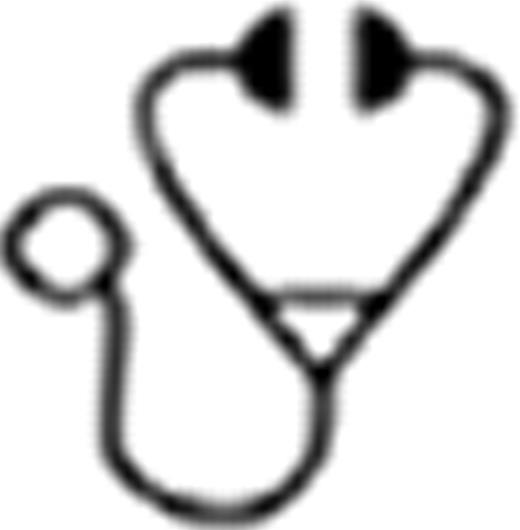Abstract
Selection of drug-resistant mutations in the Bcr-Abl kinase domain (KD) is a critical problem undermining the long-term efficacy of tyrosine kinase inhibitor (TKI)-based therapies in Philadelphia-positive (Ph+) acute lymphoblastic leukemia (ALL) patients.
Bcr-Abl KD mutation screening is routinely performed by Sanger sequencing (SS). Before the advent of ultra-deep sequencing (UDS) technologies, no method was available that could conjugate the possibility to scan the KD for the so many mutations known to be associated with TKI resistance with a sensitivity higher than that of SS. UDS technologies also allow high throughputness and accurate quantitation of mutated clones and their application in a diagnostic setting is not far to come.
We used an UDS strategy for Bcr-Abl KD mutation screening in order to study the dynamics of expansion of mutated clones in Ph+ ALL patients receiving TKI-based therapies and to test the ability of UDS to highlight emerging clones harboring critical mutations.
72 samples from 25 Ph+ ALL patients who had developed resistance to one or multiple lines of TKI (imatinib, dasatinib, nilotinib, bosutinib, ponatinib) therapy were selected for this retrospective analysis. All the patients had previously been analyzed by Sanger sequencing (SS) and were known to have developed one or more TKI-resistant Bcr-Abl KD mutations on treatment. In order to reconstruct the dynamics of mutation emergence, longitudinal re-analysis of monthly collected samples was perfomed with UDS on a Roche GS Junior. UDS allowed to achieve a lower detection limit of at least 0.1% (by generating a minimum of 5,000 sequence reads/patient), as compared to 20% of SS.
39 samples were known to harbor one (n=27 samples) or more (n=12 samples) TKI-resistant mutations with >20% abundance, as assessed by SS. UDS could successfully detect all the 54 mutations previously identified by SS. In addition, UDS detected one or multiple lower-level (<20%) mutations in 42/72 (58%) samples, demonstrating that in more than half of the cases SS may misclassify Bcr-Abl KD mutation status or underestimate its complexity. Lower-level mutations were indeed found both in samples that had been scored as wild-type by SS and in samples already harboring mutations with >20% abundance. The type of lower-level mutations detected by UDS could easily be accounted for by TKI exposure history, since the majority were known to be poorly sensitive either to the TKI being administered or to the previous TKI received. Overall, 44 samples turned out to carry multiple (two to five) mutations at any level, distributed in the same and/or in different subpopulations with a complex clonal architecture that UDS allowed to reconstruct.
Of note, in 14/25 (56%) patients with molecularly detectable disease but not yet evidence of cytogenetic or hematologic relapse, UDS could identify emerging TKI-resistant mutations 1 to 2 months before they became detectable by SS. These outgrowing mutations were detected at 1–19% abundance in 12 patients and at 0.1–1% abundance in 2 patients. In the remaining 11 patients, dynamics of outgrow of the TKI-resistant mutations (five T315I, two Y253H, two E255K, one E255V and one F317L) was so rapid that not even strict monthly monitoring could allow to pick them up before they became dominant.
Now that multiple options are available, Bcr-Abl KD mutation monitoring has become a precious tool for rational decision-making in order to maximize the efficacy of TKI-based regimens as induction or salvage therapy for Ph+ ALL patients. UDS proved as reliable as SS for the detection of mutations with >20% abundance and to have comparable costs. As a key advantage, UDS added precious quantitative and qualitative information on the full repertoire of mutated populations, that SS failed to appreciate in more than half of the samples analyzed. TKI-resistant mutations leading to patient relapse were not necessarily preexisting at low levels at diagnosis or at the time of switchover to another TKI, underlining the importance of regular monitoring of patients. Although TKI-resistant populations may arise and take over very rapidly, in approximately half of the patients monthly monitoring with UDS would have allowed to identify them earlier than SS and well in advance of clinical relapse, thus allowing a more timely therapeutic intervention.
Soverini:Novartis: Consultancy; Bristol-Myers Squibb: Consultancy; ARIAD: Consultancy. Luppi:CELGENE CORPORATION: Research Funding. Baccarani:ARIAD, Novartis, Bristol Myers-Squibb, and Pfizer: Consultancy, Honoraria, Speakers Bureau. Martinelli:NOVARTIS: Consultancy, Honoraria, Speakers Bureau; BMS: Consultancy, Honoraria, Speakers Bureau; PFIZER: Consultancy; ARIAD: Consultancy.

This icon denotes a clinically relevant abstract
Supported by Fondazione CARISBO, PRIN, IGA MZCR NT11555.
Author notes
Asterisk with author names denotes non-ASH members.

